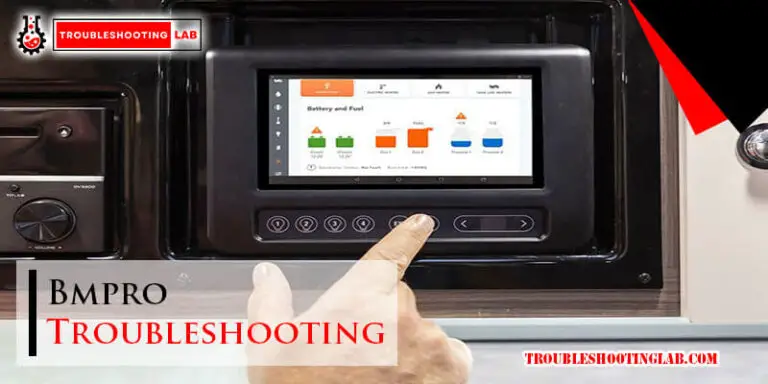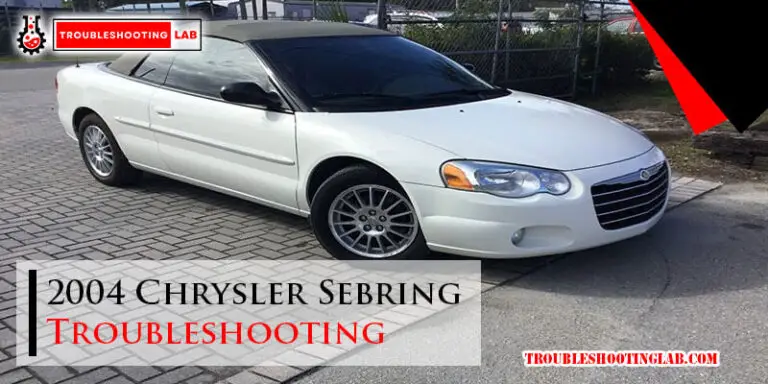Motorhome Electric Step Troubleshooting: Quick Fixes and Tips
Motorhome electric steps can be tricky. They sometimes refuse to work right.
This can be a big problem when you’re on the road. Troubleshooting these steps can be a challenge, but it’s not impossible. A motorhome’s electric step is a key feature for easy access and exit. When it malfunctions, it can cause frustration and delay your travels.
Understanding common issues and how to fix them can save time and money. In this guide, we’ll explore typical problems you might face with electric steps and offer practical solutions. Whether you’re a seasoned RV owner or new to motorhomes, this information will help keep your travels smooth and worry-free. Let’s dive into the details of motorhome electric step troubleshooting.

Credit: www.youtube.com
Common Issues
Motorhome electric steps can face several problems, causing inconvenience during trips. This section will help you identify and fix common issues. Understanding these problems can ensure smooth operation and safety.
Step Won’t Extend
If your motorhome step won’t extend, it can be frustrating. Here are common causes:
- Power Supply Issues: Check the battery connection and fuses. A weak or dead battery can prevent the step from extending.
- Obstructions: Ensure there are no objects blocking the step’s path. Even small debris can cause problems.
- Wiring Problems: Inspect the wiring for any visible damage. Loose or broken wires can disrupt the power flow.
- Faulty Motor: Listen for motor noises. If the motor is silent, it might need replacement.
Step Won’t Retract
A step that won’t retract poses safety risks. Consider these potential issues:
- Control Switch: Test the control switch for functionality. A faulty switch may need replacement.
- Mechanical Jam: Check for physical obstructions. Dirt or rust can jam the mechanisms.
- Power Supply: Ensure the battery is charged. Low power can prevent the step from retracting.
- Sensor Issues: Some steps have sensors. Clean and check sensors for proper operation.
By identifying these common issues, you can troubleshoot and resolve problems effectively. Regular maintenance can also prevent many of these issues from occurring.
Safety Precautions
Ensuring the safety of both yourself and your motorhome is crucial during troubleshooting. Taking the right precautions can prevent accidents and injuries. Here are some important steps to follow.
Turn Off Power
First, always turn off the power to your motorhome’s electric step. This reduces the risk of electric shock. Locate the main switch and ensure it is in the “off” position. Disconnect the battery if possible. This step is essential for your safety.
Use Protective Gear
Wearing the right protective gear is important. Always wear gloves to protect your hands. Safety goggles can protect your eyes from sparks or debris. A simple pair of sturdy shoes can prevent foot injuries.
Basic Tools Needed
Troubleshooting your motorhome’s electric step can seem daunting. With the right tools, it becomes manageable. You will need some basic tools to get started. These tools help identify and fix common issues with your electric step. Let’s look at the essential tools you need.
Screwdrivers
Screwdrivers are essential for accessing parts of the electric step. You will need both Phillips and flat-head screwdrivers. Use a Phillips screwdriver for screws with a cross-shaped slot. A flat-head screwdriver is needed for screws with a straight, single slot.
Ensure you have different sizes. This allows you to handle various screws without damaging them. Always keep your screwdrivers in good condition. Worn-out tips can strip screws, making repairs difficult.
Multimeter
A multimeter is another critical tool. It helps measure voltage, current, and resistance in the electric step’s wiring. This tool can diagnose electrical issues effectively.
Set the multimeter to the appropriate setting. Use the voltage setting to check the power supply. The resistance setting helps find broken wires or components. Multimeters come with probes that you touch to the wires or terminals.
Here is a simple table to show what a multimeter can measure:
| Setting | Use |
|---|---|
| Voltage | Check power supply |
| Current | Measure electrical flow |
| Resistance | Find breaks in wires |
Always follow safety guidelines when using a multimeter. Incorrect usage can be dangerous. With practice, a multimeter becomes an invaluable tool in your troubleshooting kit.
Checking The Power Supply
Your motorhome’s electric step relies on a stable power supply. If the step isn’t working, the power supply might be the issue. This section will guide you through checking the power supply step-by-step. It covers battery inspection and fuse examination.
Battery Inspection
First, check the motorhome’s battery. A weak or dead battery can stop the electric step from working. Use a voltmeter to measure the battery voltage. Ensure the voltage is around 12.6 volts for a fully charged battery.
If the battery voltage is low, recharge it. After charging, test the step again. If the step works, the battery was the problem. If not, move to the next step.
Fuse Examination
Next, examine the fuses related to the electric step. Locate the fuse box in your motorhome. Check the manual for the specific fuse linked to the step.
Inspect the fuse for any signs of damage. A blown fuse will have a broken wire inside. Replace any damaged fuses with ones of the same rating.
After replacing the fuse, test the electric step. If it works, the fuse was the issue. If not, consider further troubleshooting or professional help.
Inspecting The Motor
Inspecting the motor of your motorhome electric step is crucial. The motor controls the extension and retraction of the step. Regular checks can prevent major issues. This section will guide you through testing and replacing the motor.
Motor Function Test
First, disconnect the motor from the step mechanism. Test the motor by connecting it directly to a power source. Listen for any unusual noises. The motor should run smoothly without any grinding sounds. If the motor does not move, it may be faulty.
Check the wiring for any visible damage. Damaged wires can prevent the motor from working properly. Use a multimeter to check the voltage. Ensure that the motor receives the correct power supply. If the motor receives power but does not work, it needs replacement.
Motor Replacement
If the motor is faulty, you need to replace it. Start by purchasing a compatible motor for your electric step. Ensure it matches the specifications of the old motor. Remove the old motor by unscrewing the bolts. Disconnect the wiring carefully.
Install the new motor by following the reverse steps. Secure the motor with bolts and connect the wiring. Test the new motor by activating the electric step. The step should extend and retract smoothly. If not, recheck the installation and wiring.

Credit: www.rvwithtito.com
Examining The Wiring
Inspecting the wiring is a crucial step in troubleshooting motorhome electric steps. Faulty wiring can cause the steps to malfunction. This section will guide you through checking wire connections and identifying wire damage.
Wire Connections
Start by examining all wire connections. Ensure they are tight and secure. Loose connections can interrupt the power supply. Check for any corrosion at the terminals. Corrosion can lead to poor connectivity. Clean corroded terminals with a wire brush. Reconnect them firmly after cleaning.
Wire Damage
Next, inspect the wires for any visible damage. Look for cuts, frays, or exposed wires. Damaged wires can cause short circuits or power loss. Replace any damaged wires immediately. Use electrical tape to secure minor cuts. For major damage, consider replacing the whole wire. Ensure all wires are properly insulated to prevent future issues.
Lubrication And Cleaning
Motorhome electric steps require regular care to work smoothly. Two key tasks are lubrication and cleaning. Proper maintenance ensures the steps function well and last longer. In this section, we will cover the types of lubricants to use and the best cleaning techniques.
Lubricant Types
Choosing the right lubricant is essential for keeping your electric steps in good condition. Here are some common types:
- Silicone Spray: Ideal for its non-greasy finish. It repels water and dust.
- Dry Lubricant: Best for sandy or dusty environments. It does not attract dirt.
- Graphite Lubricant: Excellent for areas with extreme temperatures.
- White Lithium Grease: Provides long-lasting lubrication. It is good for metal parts.
Cleaning Techniques
Regular cleaning of your motorhome electric steps is crucial. Follow these steps to ensure thorough cleaning:
- Inspect: Check the steps for dirt, debris, and damage.
- Brush Off: Use a soft brush to remove loose dirt.
- Wash: Use mild soap and water. Avoid harsh chemicals.
- Rinse: Rinse thoroughly with clean water.
- Dry: Use a clean cloth to dry the steps completely.
- Lubricate: Apply the chosen lubricant to the moving parts.
These steps will help maintain the efficiency of your motorhome electric steps. Keeping them clean and well-lubricated ensures they operate smoothly and safely.
Adjusting The Step Mechanism
Adjusting the step mechanism of your motorhome’s electric step is essential for smooth operation. Regular maintenance ensures the step functions correctly, avoiding potential hazards. Two key aspects to consider are alignment check and tightening bolts. Let’s explore these in detail.
Alignment Check
First, ensure the step is properly aligned. Misalignment can cause improper functioning. Follow these steps:
- Extend the step fully.
- Inspect the step for even spacing on both sides.
- Check for any obstructions that may cause uneven extension.
If you notice any misalignment, it’s time to make adjustments. Loosen the mounting brackets slightly. Adjust the step position until it’s even. Retighten the brackets to secure the step in the correct position.
Tightening Bolts
Loose bolts can lead to instability. Regularly check and tighten all bolts. Here’s a quick guide:
- Locate all the bolts on the step mechanism.
- Use a wrench to ensure each bolt is tight.
- Do not over-tighten as it may damage the threads.
Keeping the bolts tight helps maintain the step’s stability and prevents unwanted movement. Pay special attention to the mounting bolts as they hold the step in place.
By regularly checking alignment and tightening bolts, you can ensure your motorhome’s electric step operates smoothly. These simple steps can prevent more significant issues down the road, ensuring a safer and more enjoyable travel experience.
When To Seek Professional Help
Experiencing issues with your motorhome electric step? Seek professional help if the step is stuck, makes unusual noises, or the motor fails. Timely assistance prevents further damage and ensures safety.
Maintaining your motorhome’s electric step can be straightforward. Yet, some issues need expert intervention. Knowing when to seek professional help can save time and prevent further damage. Here are situations where calling a professional is the best choice.Complex Electrical Issues
Motorhome electric steps rely on intricate wiring and connections. If wires appear frayed or connections seem loose, it can be risky to fix them yourself. Electrical problems can cause short circuits or sparks. Professionals know how to handle these safely. They have the right tools and knowledge.Persistent Problems
Sometimes, an electric step keeps malfunctioning. You might fix it, but the problem returns. This could be a sign of a deeper issue. Persistent problems often need professional diagnosis. Experts can find the root cause. They can provide lasting solutions, ensuring your step works reliably. “`
Credit: www.youtube.com
Frequently Asked Questions
Why Is My Motorhome Electric Step Not Working?
Check the power supply. Ensure the step switch is on. Examine the fuse and wiring.
How Do I Reset My Electric Step?
Turn off your motorhome. Wait for a minute. Turn it back on. The step should reset.
What Should I Do If The Step Motor Is Noisy?
Lubricate the moving parts. Check for debris. If noise continues, the motor may need replacement.
Can Weather Affect My Motorhome’s Electric Step?
Yes, extreme weather can cause malfunctions. Ice, dirt, and moisture can interfere with operation.
How Often Should I Maintain My Motorhome Step?
Inspect and clean monthly. Lubricate moving parts every three months. Regular maintenance ensures smooth operation.
Conclusion
Fixing motorhome electric steps can be simple with these tips. Check connections regularly. Clean and lubricate moving parts. Inspect the motor and gears. Replace faulty components. Safety first—disconnect power before repairs. Regular maintenance ensures smooth operation. Keep your motorhome steps in top shape.
Enjoy hassle-free travel and safe entry. Happy camping!





